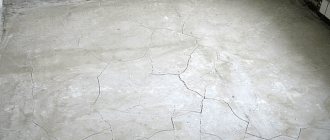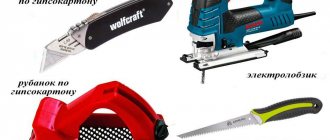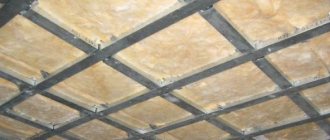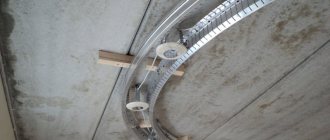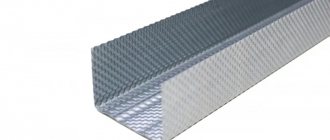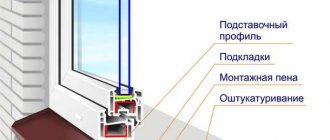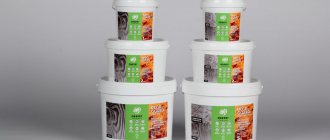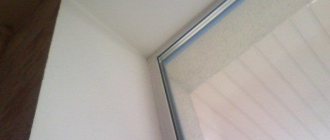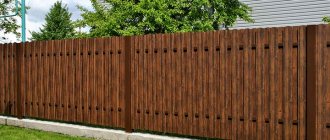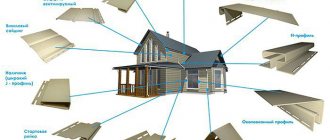Any plasterboard construction, with rare exceptions, requires a frame made of a metal profile. It can be cut in different ways - for example, with a hacksaw or a grinder. But with fasteners everything is more complicated - making them in the traditional way is not always effective and convenient. To do this, it is better to use a tool specially designed for the procedure - a profile cutter. Let's talk in more detail about how to choose this tool.
Design and principle of operation
In its design, the cutter vaguely resembles pliers. It consists of the following elements:
- Bracket with stop . It is a rectangular guide in which the processed metal profile is fixed.
- Emphasis . A metal cylinder or parallelepiped into which the profile to be punched rests. Located on the outer end of the bracket. It has a small recess for the entry of the punch.
- Punch . A small (often pointed) metal cylinder that exerts a mechanical effect on a metal profile and thereby makes a hole in it.
- Video clip . A wheel mounted on a movable lever. Drives the punch.
- Fixed lever . A lever used to hold a tool. Attached to the bottom of the bracket. For better grip, the handle is often coated with a polymer compound.
- Movable lever . Using a bracket, it is secured over the fixed one. When moving, the punch moves.
- Spring . Located between two levers. Helps return the tool to its original position after breaking through the metal profile.
The operation diagram of the cutter is as follows:
- the bracket is placed over two sections of the metal profile so that the stop is in the place where they need to be connected;
- the fixed lever is pressed against the back of the hand, and the movable lever is pressed with the fingers;
- a movable lever drives the punch, which passes through the profile and creates a hole in it;
- the edges of the hole are bent in such a way that the deformed sections of the metal overlap each other, thereby securely fastening together.
Due to the design features of various models of the device, a movable lever may rest against the back of the hand.
What it is?
This tool began to be used in construction not so long ago. Most ordinary users and home craftsmen have little idea what a cutter for a drywall profile is, how it works, and on what principle it works.
Externally, the tool resembles pliers: it has 2 handles, one of which has a bracket attached to the end. A cutting element (punch) is installed on the second of them. The principle of operation is also very simple: 2 profiles are combined, the connection point is placed between the bracket and the punch, the handles are pressed, and a hole appears on the metal (it is also called a groove), which holds the profiles in a given position. Some devices on the reverse side press the protruding edges tightly, some do not.
Advantages and disadvantages
Using a cutter during installation of a metal profile for plasterboard has a number of advantages:
- Speed . If you make holes with a drill or by screwing screws into the profile, it takes quite a lot of time. Using a cutter reduces the time it takes to make one hole to a fraction of a second.
- Accuracy . The tool allows you to make a neat, even hole without deforming the profile. Often this cannot be achieved when using a drill or screw. The hole deviates from the required position and becomes slightly inclined. Metal often wrinkles (especially true for soft aluminum profiles).
- Evenness . The front side of the metal profile frame remains absolutely flat. When connecting with screws or bolts, this cannot be achieved - the head always remains on the surface.
- Economical . Using a drill or screwdriver involves the consumption of electrical energy. The cutter is a completely mechanical tool. This allows you to save on electricity. There is also a saving in the absence of the need to purchase additional fasteners (for example, screws).
- There is no need to hire an assistant . Often, when assembling large structures made of metal profiles, a second person is needed to hold the material while drilling. When using a cutter, the need for it practically disappears - all the necessary actions can be performed alone.
Despite the large number of advantages, the tool has one significant drawback. The connection made using it is not as reliable as installation using screws. The fact is that the thread of the screws better resists the tensile load. An absolutely smooth connection made by a cutter is much less reliable.
Due to insufficient fastening reliability, the cutter is used as a temporary solution or in combination with screws. Especially if the drywall will experience significant loads. For example, when covering a wall, it is recommended to fasten the main connections with screws, and use the cutter only on the transverse ones.
How to use the cutter
Installation work can be completed efficiently by adhering to the following rules for using pliers.
How to fasten a ceiling profile (PP) with a guide profile (PPN) using a conventional cutter
- You should start by checking the functionality of the tool. To do this, it is suggested to make several test connections. Based on the nature of the passage of working elements into the plane of the profiles and the quality of the holes, appropriate conclusions are drawn.
- The next step is to check the strength of the connections. Under the influence of forces, the reliability of the frame is controlled. A negative result may indicate low quality of the metal from which the profiles are made. In this case, it is better to make connections with self-tapping screws or replace weak material. Professional flaring does not guarantee a long service life of the frame structure when connected with a cutter.
- Installation work begins with installing the profile. To do this, make markings by placing two parts overlapping.
- The junction is grabbed with pliers. Next, the steel sheet is slightly split.
- The junction of the steel elements is fixed by squeezing the handle. The grip is weakened when using a mechanism with a return spring.
- After releasing the tool, check the strength of the connection.
The quality of the equipment directly influences the result of the connection. If, after fixing the joint, the antennae do not unbend completely, the problem lies in the pliers themselves. When working with a professional device, you should focus on the grip strength of the handle. Heavy pushing is often caused by insufficient impact, so the attempt should simply be repeated (passing through the same holes).
Kinds
What kind of cutter do you use?
NormalReinforced
There are 3 types of metal profile cutters:
- Regular
The cheapest options are named. Suitable for relatively small amounts of work.
They have the following distinctive features:
- less durable (compared to other varieties) connection of parts;
- less durable material;
- less penetration force;
- less work resource.
Expert opinion
Levin Dmitry Konstantinovich
Due to the low penetration force, most models in this category are not capable of working with profiles thicker than 1.5 mm.
Reinforced
Heavier and more expensive instrument. Has greater penetration power and lasts longer. Capable of working with metal profiles from 1.5 cm. In this case, jamming does not occur.
Reinforced models are often used by professional builders.
- Professional tool
Designed for use by professional craftsmen and capable of penetrating even a fairly thick layer of metal. It has a more massive design: everything in it is reinforced, from the punch and frame to the spring.
Devices are classified according to other criteria. For example, depending on how many hands are involved in the work, they are:
- one-handed;
- two-handed.
The latter provide greater penetration power, and the latter provide greater operating speed.
Different models may differ in the diameter of the bracket. The smaller it is, the more difficult-to-reach places installation can be carried out. However, this also has disadvantages - the penetration force is limited, and the thickness of the metal available for work is reduced.
Varieties
There are three main types of cutters:
- manual;
- reinforced (pneumatic);
- professional.
The manual cutter has a convenient lightweight design, fits in one hand, is inexpensive and can withstand the stress of home repairs. The reinforced, or pneumatic, cutter is popular among users. It is made of tool steel and often has a removable cutting structure. Its service life increases significantly thanks to replaceable parts. Professional tools are larger in size, more difficult to operate and are suitable for large repair projects.
Conventionally, according to their functionality, cutters are divided into the following types:
- small-sized types of cutters are more popular because they are cheaper in cost and more convenient to use when talking about repairs that are carried out occasionally;
- the enhanced version of the flasher is convenient for the work of small teams of repairmen, if they mean work in domestic and utility premises;
- A professional cutter should be used when implementing large-scale projects, large volumes of capital construction, and when installing partitions in premises.
The first two types of such instruments are attractive due to their low cost and relatively small size. The third type of cutter also has its advantages - it can be used for a long time, it can perform more functions. There are also flexible cassette cutters that use a needle roller.
It is necessary to make a small remark: some dividers are used to work with profiles from the same manufacturer, therefore, they cannot be called universal. Therefore, before purchasing it, it is necessary to determine the types of profile that are going to be used, as well as the company that produces the tools and consumables.
Selection options
Here are a few criteria that you need to pay attention to when purchasing a device:
- Penetrating power . Different models work with metal profiles of different thicknesses and have different penetration forces. You should choose based on what material will be used during construction or renovation.
- Bracket dimensions . The thinner the bracket, the more maneuverable the tool. The thicker it is, the thicker the profile the cutter can penetrate.
- Convenience . The tool should be comfortable to hold and its use should not cause discomfort.
- Build quality . All components of the device must be tightly connected to each other. Nothing should loosen or move away anywhere. High-quality assembly is the key to reliability and long service life of the device.
- Price . The more expensive the device, the more reliable and better quality it is.
If you don’t want to pay too much, then the best option is mid-price models. They have acceptable quality, but are not very expensive and are available to almost everyone.
Application benefits
Using this tool will help you in many situations. The drywall cutter has the following advantages:
- connects frame elements without dents;
- no need to use additional fastening devices for connection: crabs, dowels, screws, etc.;
- the resulting holes have smooth edges. There are no burrs or roughness on them, so there is no need for additional processing;
- no need to make additional markings to make holes;
- the tool does not require electricity;
- significant time savings.
As you can see, a cutter for connecting profiles is a very convenient thing to repair.
The best hand models
Let's look at several current models of hand tools.
Sparta
A simple and inexpensive, but very convenient tool. Made of durable stainless steel coated with anti-corrosion coating. The handles have polymer pads that prevent slipping and improve grip. Designed for connecting metal profiles up to 1-1.2 mm thick.
Thanks to the small diameter of the bracket, it is quite maneuverable and easily allows you to connect the profile even in hard-to-reach places.
The average cost of the model in Russian stores is 500-600 rubles.
SIBIN 3132
Inexpensive cutter. Structurally, it is almost no different from Sparta, but has a larger diameter bracket and is a little more massive. Thanks to this, the model can be used to work with profiles up to 1.5 mm thick.
The average cost in Russian stores is in the range from 700 to 800 rubles.
DEXX 31391
An inexpensive but high-quality cutter that can be purchased for 500-600 rubles. It stands out among other budget devices due to its high-quality assembly. Capable of working with metal profiles up to 1 mm thick.
The best reinforced options
Let's look at several models of reinforced tools that are relevant for purchase.
FIT
It is a reinforced device. It has a larger diameter of all parts, due to which greater strength is achieved. Also has more reliable connections. Designed to work with two hands, thanks to which it is possible to provide good penetration force. Easily able to work with profiles thicker than 1.5 mm.
The handles have polymer linings with cutouts for fingers. This makes it easier to hold and prevents slipping.
The average cost is 600-700 rubles.
STAYER GRAND
A cutter made in Germany and China. It has a structure reinforced by using a double steel frame. Designed to work with various types of profiles. Capable of penetrating metal with a thickness of 1.5 mm.
The average cost of the model is 1,800 rubles.
Knauf
An expensive and high-quality tool from a German manufacturer, which costs from 4,000 rubles. Designed for one-handed use. The design is simple, but ensures penetration of a metal profile with a thickness of 1.3-1.4 mm.
The best professional tool
Below are some current professional tools.
BISON Master 3135
A domestically produced tool, the cost of which is only 1,500 rubles. It has a massive bracket, reinforced with additional steel strips. Equipped with a specially designed lever. Thanks to this, it is possible to penetrate a thick profile.
Brigadier
An inexpensive cutter with a powerful bracket, designed to work with thick profiles. Structurally reminiscent of the Bison. But it costs slightly less – about 1,100 rubles.
TOPEX (43E101)
Model with a reinforced bracket made of two steel plates connected by rivets. Thanks to this design solution, it is able to penetrate even thick metal profiles. Designed for one-handed operation. It has a rather tight return spring, so not everyone will be comfortable working with the device.
The average cost of the model is 2,000-2,500 rubles.
